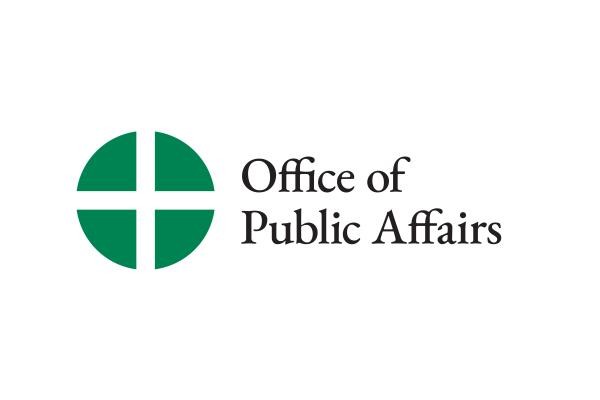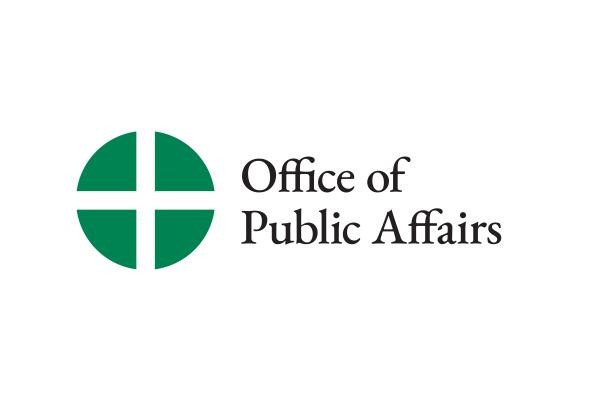Study Finds Abundance Of Potential Priests, Sisters, Brothers
WASHINGTON—More Catholics wouldbecome priests and religious sisters and brothers if there were greaterencouragement for them to pursue a religious vocation. Problems such as cost ofCatholic schools and impediments to education, particularly among HispanicCatholics, also stand as factors in determini
WASHINGTON—More Catholics wouldbecome priests and religious sisters and brothers if there were greaterencouragement for them to pursue a religious vocation. Problems such as cost ofCatholic schools and impediments to education, particularly among HispanicCatholics, also stand as factors in determining who chooses to pursue areligious vocation.
Those aresome of the key findings in "Consideration of Priesthood and ReligiousLife Among Never-Married U.S. Catholics," a survey conducted by the GeorgetownUniversity-based Center for Applied Research in the Apostolate (CARA). The U.S.bishops' Secretariat for Clergy, Consecrated Life and Vocations commissionedthe study released in October with financial support from the Conrad N. HiltonFoundation. The study is available online at https://www.usccb.org/beliefs-and-teachings/vocations/survey-of-youth-and-young-adults-on-vocations.cfm
Thesurvey found that among never-married Catholics, three percent of men and twopercent of women have seriously considered a religious vocation.
"This is equivalent to 350,000never-married men and 250,000 never married women," the survey said. "Shepherdingmore of these individuals on the path to seeking a vocation would likelyrequire a combination of greater outreach from the Church, encouragement fromothers, assistance in obtaining educational prerequisites, and dealing withother issues such as student loan debt and citizenship status."
Thesurvey found "generational differences" with the least interest in vocationsoccurring among the post-Vatican II Catholics, born 1961 -1981. The surveyfound an increase in numbers among the millennial generation, those born after1981, "particularly among men of this generation."
CARA found that other ethnicities,primarily Asian women, "are more than twice as likely to consider a vocation"when compared to those women who described themselves as white or Hispanic.
The impact of Catholic education isstrong.
"Among male respondents, aftercontrolling for other factors, those who attended a Catholic secondary school(grades 9-12) are more likely to have considered becoming a priest or religiousbrother." Those males who attended Catholic secondary schools, the surveyfound, "are more than six times as likely to have considered a vocation."
"Participation in a parish youthgroup during primary school years (grades K-8) is also strongly related tovocational consideration for men. These respondents are more than five times aslikely to consider becoming a priest or religious brother than those who didnot participate in a parish youth group."
Encouragement from others is alsoimportant for men, the survey found. "Respondents who had three personsencourage them would be expected to be more than five times more likely toconsider a vocation than someone who was not encouraged by anyone."
Influences on women were similar.However, the study found "it is attendance at a Catholic primary school whichis important for female vocational consideration."Parish youth group participation also isimportant for women, but "unlike males, it is participation during high schoolyears rather than primary school years that has an effect."
"Women who participated in a parishyouth group during these teen years are more than nine times as likely toconsider becoming a religious sister," CARA found.
The survey also noted that "althoughmost Catholics who are becoming priests, religious brothers or religioussisters now are typically in their 30s or even older, it is likely that theroots of these vocations were established in their teen years or even earlier."
ArchbishopRobert J. Carlson, chairman of the bishops' Committee on Clergy, ConsecratedLife, and Vocations, said the findings offer hope."The good news is that more than 500,000never-married men and women have seriously considered a vocation to priesthoodor the religious life.The challenge isto pastor and guide these individuals more effectively.This will require greater and more consistentencouragement from others, particularly within the family, and a more urgentfocus on access to Catholic education for our young people."
The study listed several challenges invocation work, particularly among Hispanics, a growing population of the churchin the United States. About 48 percent of all Catholics in the United Statesborn after 1981 are Hispanic. Educational requirements for religious formationprograms, such as college experience and the skills to pursue advancededucation, puts Hispanics at a disadvantage.
"Hispanicrespondents are the least likely to report attending college or obtaining acollege degree," the survey found. "Hispanic respondents are also the leastlikely to indicate enrollment in a Catholic school at any level of theireducation and the results of the study suggests that this makes it less likelythat they will consider a vocation."
Despitethe intensive efforts of many bishops and religious communities to make therecruitment process more inviting to and supportive of Hispanic candidates, theshortfall of Hispanic clergy and religious remains urgent. About 35 percent ofall Catholics in the United States are Hispanic and yet only 15 percent of the2012 ordination class and 9 percent of the 2011 religious profession class wereHispanic. This is a gap that continues to need urgent attention.
---
Keywords: priests, sisters, brothers, vocation, ordination, U.S.Conference of Catholic Bishops, U.S. bishops, Archbishop Robert Carlson,Secretariat for Clergy, Consecrated Life and Vocations, Center for AppliedResearch in the Apostolate, CARA, millennial generation, Vatican II,never-married, Hispanic, Asian, education, seminary, formation, youth group
# # # # #
MEDIA CONTACT ONLY:Sr. Mary Ann WalshO: 202-541-3200M: 301-325-7935Email

